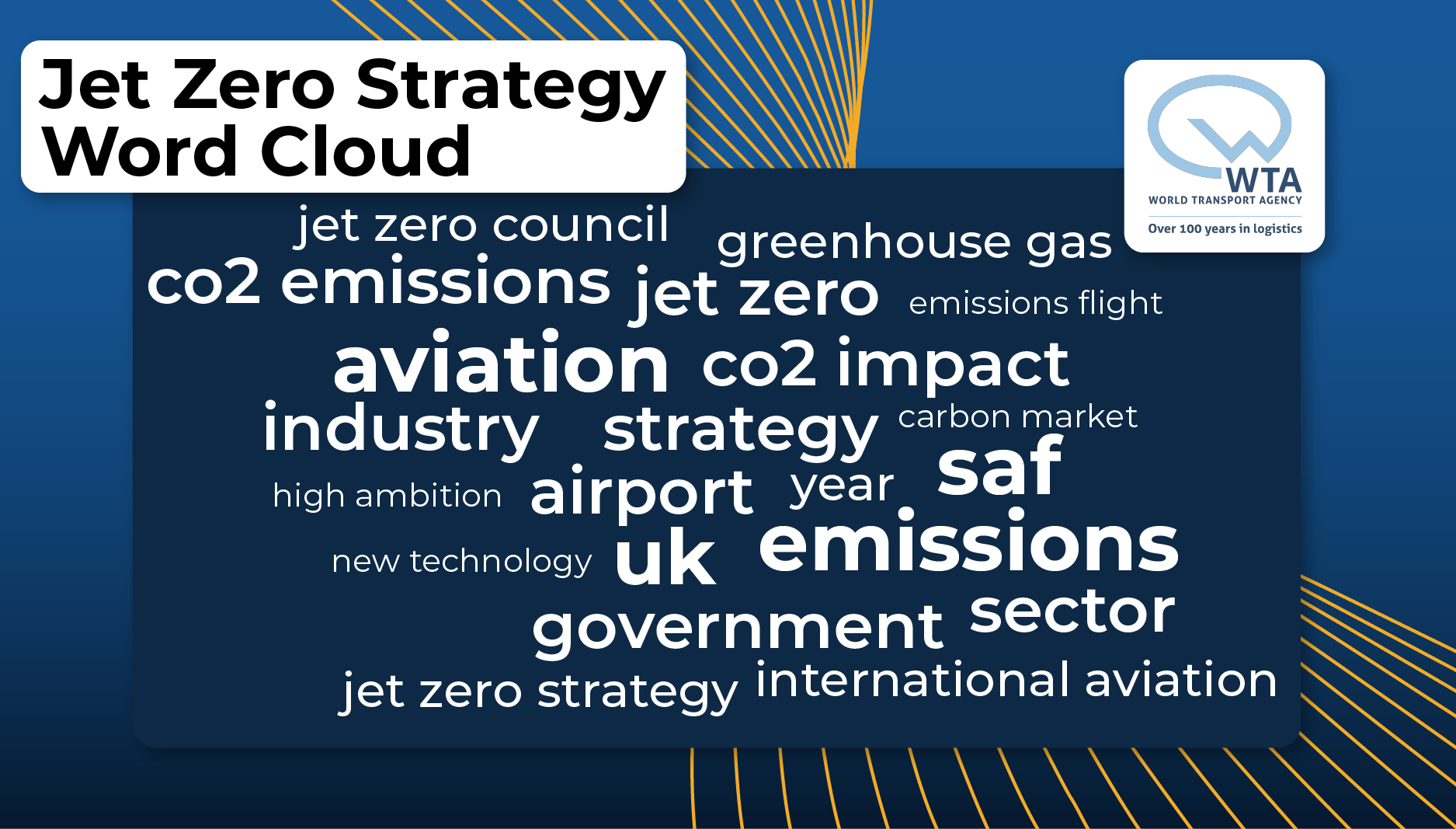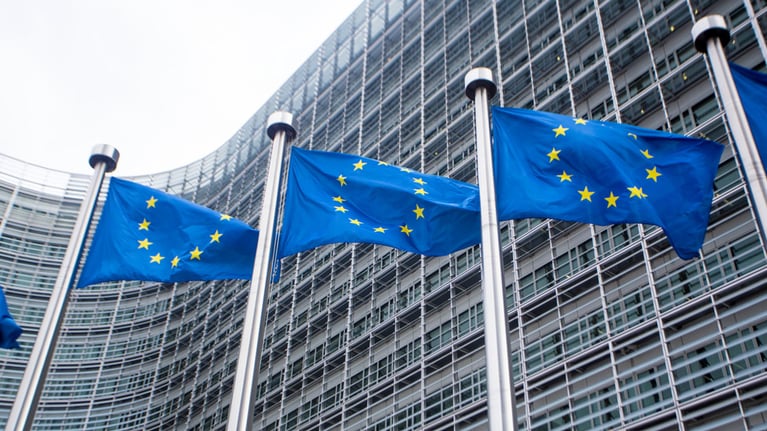In July 2022, the UK Department of Transport unveiled its Jet Zero strategy. An 81-page plan of action for achieving a net zero UK aviation industry by 2050.
The timing couldn’t be more apt. A recent UK heatwave demanded an extension of the Y axis on historical temperature charts. British government research indicates 85% of people are concerned about climate change. Scientific research suggests aviation is responsible for 2.5% of global carbon emissions.
All the gauges are clear, this change is crucial. An industry that has avoided the scrutiny of decarbonisation through a lack of alternatives, is now receiving a glare of expectation
So, what does it mean for the air freight industry? A sector of renewed importance following the COVID-19 pandemic. Having provided life-support for the airlines when passenger traffic evaporated globally. What do shippers need to be aware of in the coming years as aviation pursues net zero? Is added cost inevitable? Is an environmental war on air freight around the corner?
We’ve read through the Jet Zero strategy in detail to provide the key details for shippers in the UK and around the world.
What is the Jet Zero Strategy outlining?
So, the overall aim of the Jet Zero Strategy is net zero aviation by 2050, but there’s plenty of interim targets along the path to getting there.
Firstly, its crucial to note the target is only net neutrality, not the complete removal of emissions from aviation.
In fact, the proposal is to have aviation emissions down to 19.3MtCO2e (Million tons of carbon dioxide equivalent) by 2050, from a 2019 peak of 38.2MtCO2e. A 49.5% cut. Investment in carbon removal is hoped to make up the remaining half.
To achieve that single goal, the government intends to invest in several areas:
- Finding system efficiencies: streamlining the current aviation industry.
- Sustainable aviation fuels (SAF’s): building a thriving sustainable aviation fuel industry.
- Zero emission flight: developing and bringing into commercial service forms of aircraft that offer the potential for zero carbon emissions.
- Markets and removals: investing in carbon removals to offset remaining emissions by 2050.
- Influencing customers: supporting customers in making sustainable aviation travel choices.
- Addressing non-CO2 emissions: look at mitigating the non-carbon environmental impacts of aviation.
On those 6 targets, the success of the Jet Zero Strategy will be judged.

What consequences is the Jet Zero Strategy going to have for air freight shippers?
Air freight isn’t going anywhere
So, the plan is net zero aviation, not removal of emissions completely. What this means for shippers is that whilst the changes to infrastructure over the next 25 years are going to be significant, they aren’t seismic.
The strategy makes clear that the aviation industry is of huge importance. Contributing £22 billion a year and 230,000 jobs to the UK economy. Thousands of which are in international freight. Threatening this with unrealistic targets and taxes is not the ambition. So, for air freight shippers, fear not. The availability of your transport option isn’t going anywhere. This is by no means a war on aviation.
“The Government remains committed to growth in the aviation sector and working with industry to ensure a sustainable recovery from the pandemic.” Jet Zero Strategy (3.56)
Sustainable Aviation Fuel shouldn’t hike costs
Developing Sustainable Aviation Fuel (SAF) is one of the most promising prospects in the strategy. Compatible with most current aircraft, SAF is renewable or waste-derived fuel that delivers an 80% reduction in emissions over its lifecycle. Interim targets for SAF include having 5 commercial scale production plants under construction by 2025 and 10% of the aviation fuel mix SAF by 2035. SAF will receive £180m of new investment from 2022-2025 in order to achieve these goals.
Although it’s currently over twice the price of traditional fuels, there is a methodology in place to get that down. With at least 5 commercial SAF production plants, costs will decline by the time it’s widely used in aircraft. Meaning no unwelcome cost shocks for air freight shippers as SAF is phased in.
In fact, given the volatility in price of oil in recent months, a world where SAF is cheaper than its forefather isn’t inconceivable.
No information on influencing shippers
The Jet Zero Strategy talks extensively about raising awareness of emissions for travelling customers at the point of ticket purchase. Advising them on more environmental routes and planes etc. But there is no specific mention of the steps that will be taken to influence shippers.
“Our aim is to preserve the ability for people to fly whilst supporting consumers to make sustainable aviation travel choices.” Jet Zero Strategy (3.54)
There's no comment or specific target centred around informing air freight shippers of their emissions.
Surely this would be the ideal time to introduce regulation requiring airlines to calculate the emissions of cargo and present that information to the shipper? Allowing consigners to make more informed decisions on the environmental impacts of their supply chain. Perhaps opting for a direct service, instead of deferred, to make carbon footprint savings.
But there are no such mentions in the inaugural Jet Zero Strategy. All the focus is around influencing individuals who are moving, not goods.
Collaboration is key
It’s reiterated throughout the strategy that collaboration between industry stakeholders is essential to achieving its aims. The Jet Zero Council, government, regulatory organisations, airports, airlines, academics, logistics firms and customers will all join forces to meet targets and accelerate progress.
Hopefully this means the concerns of shippers around limiting costs, whilst maintaining speed and availability will be listened to. They are vital details for so many global supply chains of today.
In conclusion
A cynical assessment of the Jet Zero Strategy is that it’s just words. The elapsing years will uncover if the necessary change take place.
It’s very long-term. The immediate impacts on air freight shippers of this strategy are going to be relatively unnoticeable. Goals around introducing SAF into commercial aircraft are several years away. Infrastructure just isn’t there. But the industry is undoubtedly flying towards net zero and shippers staying across the trend is essential. It’s likely businesses who make environmentally conscious decisions who will be rewarded by incoming legislation.
Jet Zero 2050 faces up to the biggest challenge the air freight industry has ever faced, but also its greatest opportunity. Air freight shippers who lead the charge on decarbonisation, demanding action from airlines, will be the ones who seize it.
Click here to see Jet Zero Strategy document in full.
Do you have full end-to-end visibility of your air freight shipments? Learn why it’s important below.
Alternatively contact our highly experienced air freight team and explore how we can simplify your logistics.









